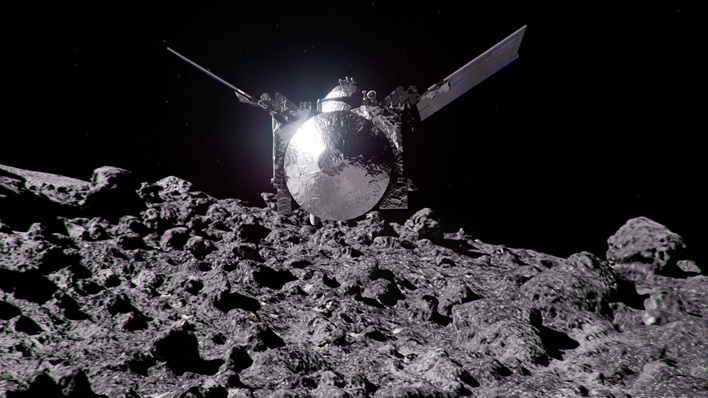Huge God Of Chaos Asteroid Apophis Hurtles Towards Earth For A Friday The 13th Flyby
Asteroid 99942 Apophis is estimated to be around 1,100-feet (335-meters) across. According to NASA, when first discovered, it was identified as one of the most dangerous asteroids that could impact Earth. However, since its orbital path has become more clear, the assessment changed.
The good news came from a radar observation campaign in March 2021, which allowed astronomers to conclude that there is no risk of Apophis impacting Earth for at least another century.
“A 2068 impact is not in the realm of possibility anymore, and our calculations don’t show any impact risk for at least the next 100 years,” explained Davide Farnocchia of NASA’s Center for Near-Earth Object Studies (CNEOS). “With the support of recent optical observations and additional radar observations, the uncertainty in Apophis’ orbit has collapsed from hundreds of kilometers to just a handful of kilometers when projected to 2029. This greatly improved knowledge of its position in 2029 provides more certainty of its future motion, so we can now remove Apophis from the risk list.”
But just because it doesn’t pose an immediate danger doesn’t mean NASA is turning a blind eye to it. Instead, the space agency plans on using its OSIRIS-APEX spacecraft, which also gathered samples from noted asteroid Bennu and returned them to Earth, to study the God of Chaos asteroid when it reaches it in 2029.

“We are most creative when the spacecraft is in flight and we’re pushing boundaries to meet mission needs,” remarked Sandy Freund, OSIRIS-APEX program manager at Lockheed Martin Space in Littleton, Colorado.
The team added it has done a lot of modeling to make sure the spacecraft remains safe, but recognizes that any time a spacecraft is taken beyond its design criteria there is risk involved.
Even with the God of Chaos asteroid being deemed safe for now, there are those who simply cannot take their eyes off it. “Apophis has intrigued us since its discovery in 2004. It posed the first credible threat from an asteroid to our planet,” remarked Paul Wiegert, lead author of a study on Apophis. “It’s the asteroid we just can’t stop watching.”

